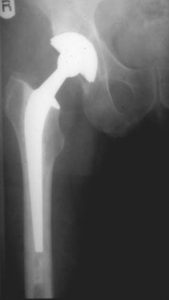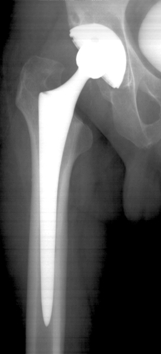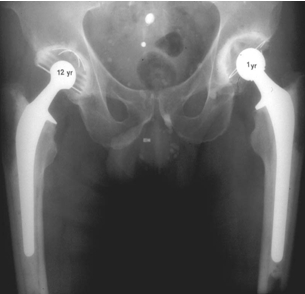Total Hip Replacement

What is a total hip replacement?
A total hip replacement is a procedure in which the doctor removes a painful hip joint and inserts an artificial joint.
When is Total Hip Replacement needed?
This procedure is done when your hip is painful or is not working well and other treatments have not worked.

Hip Arthritis

IntraOp Complex Hip Replacement

IntraOp Complex Hip Replacement
Alternatives to having a Hip Replacement
Alternatives to having a total hip replacement operation:-
- using pain killers, anti-inflammatories or other medications for the pain and inflammation
- limiting activity and using a walking aid such as a cane or walker
- avoiding activities that make the pain worse, such as climbing stairs or walking long distances
- using heat packs to relieve pain
- having the hip joint fused together
- choosing not to have treatment while recognizing the risks of your condition
You should ask your doctor whether any of these choices would be of benefit to you.
How do I prepare for a Total Hip Replacement?
You should talk to someone who has had a hip replacement to get an idea of what the procedure and recovery period are like.
Allow for time to rest after the operation and find people to help you with your day-to-day duties and care for at least the first week at home.
Follow any instructions your doctor may give you. Do not eat or drink anything after midnight on the day of the procedure. Do not even drink coffee, tea, or water.
 What happens during the Total Hip Replacement procedure?
What happens during the Total Hip Replacement procedure?
A general or spinal anesthetic is given. A general anesthetic will relax your muscles and make you feel as if you’re in a deep sleep. It will prevent you from feeling pain during the operation. A spinal anesthetic is a drug that should keep you from feeling pain during the operation. The doctor makes a cut along the side of your hip, moves the muscles connected to the top of the femur (thigh bone), and exposes the hip joint. The doctor pulls the ball portion of the joint (the end of the femur bone) away from the hip bone (the socket part of the joint). The ball of the femur is cut with a saw and an artificial replacement part is attached.
The doctor prepares the surface of the hip bone and attaches a metal or plastic socket part to the hip bone if it is worn. The doctor inserts the new ball part of the femur into the socket part of the hip. The doctor then reattaches the muscles to the top of the femur and closes the cut.
What happens after the Total Hip Replacement surgery?
You may stay in the hospital for about 3-5 days, depending how fast your hip heals. You may first be confined to bed with a wedge-shaped cushion between your legs to keep the new ball and socket joint in place. A tube (catheter) may be placed in your bladder if you have trouble urinating. Physical therapy is usually begun the day after surgery, and within days you can walk with a frame, stick, or crutches. Do not participate in sports or any heavy activity after discharge from hospital.
You can expect your orthopedic surgeon to follow you closely after your operation. The surgeon will plan physical therapy and rehabilitation for you. This therapy may last for weeks to months after your surgery and will be designed so that you will gain maximum benefit from your hip replacement. You should ask your doctor what other steps you should take and when you should come back for a checkup.
What are the benefits of having a Total Hip Replacement?
You may resume a more normal life. The problems of a painful hip joint, such as limited range of motion and constraints on how far you can walk, should be relieved.
What are the risks associated with having a Total Hip Replacement?
- There are risks when you have general anesthesia. Discuss these risks with your doctor.
- There is a risk of infection from the operation. You will be given antibiotics to reduces this risk.
- A blood clot may form in the veins, escape into the bloodstream, and block an artery in the lungs. You may be given a blood thinner to try to avoid this.
- There is a small chance other bones may be broken during surgery. This may require a longer hospital stay.
- The nerves in the hip area may be injured from swelling or pressure. This can cause some numbness.
- The new hip joint will not move as well as a normal joint. It can be dislocated more easily. You must be careful not to sit too low or to cross your legs.
- At the time of surgery the new ball joint is forced into the femur (thigh bone) where the bone marrow is. As a result, pieces of fat in the bone marrow may become loose, enter the bloodstream, and and in rare instances cause problems in the lungs.
- There is a risk of bleeding from this procedure. You may need a blood transfusion. The replacement parts may become loose or break. This occurs a small percentage of the time and usually takes years to develop.
- Dislocation: There is a small chance (less than 2%) of the hip from dislocating i.e. the ball coming away from the socket. This risk is greatest during the first 3 months after surgery during which the tissues about the hip are healing. If you pay close attention to the precautions you are given in the hospital and follow the do’s and don’ts, it is unlikely dislocation will happen.
If a dislocation of the hip happens, it will require an anesthetic to put the ball back in the socket. Occasionally further surgery is needed to keep the ball in the socket. - Leg Lengths: Every attempt is made to return the leg to the appropriate length after hip replacement surgery – However this cannot and is not guaranteed, because of variations in anatomy or the need to provide a stable hip replacement, the leg may end up being longer or shorter. This usually is not noticeable, but occasionally may require the use of a shoe insert to make the legs feel equal length.
You should ask your doctor how these risks apply to you.
Total Hip Replacement Surgery, London
Please contact Mr Jig Patel FRCS for more information and to arrange a consultation about Total Hip Replacement Surgery.
Mr. Jig Patel FRCS is a Consultant Orthopaedic Surgeon based in central London.

